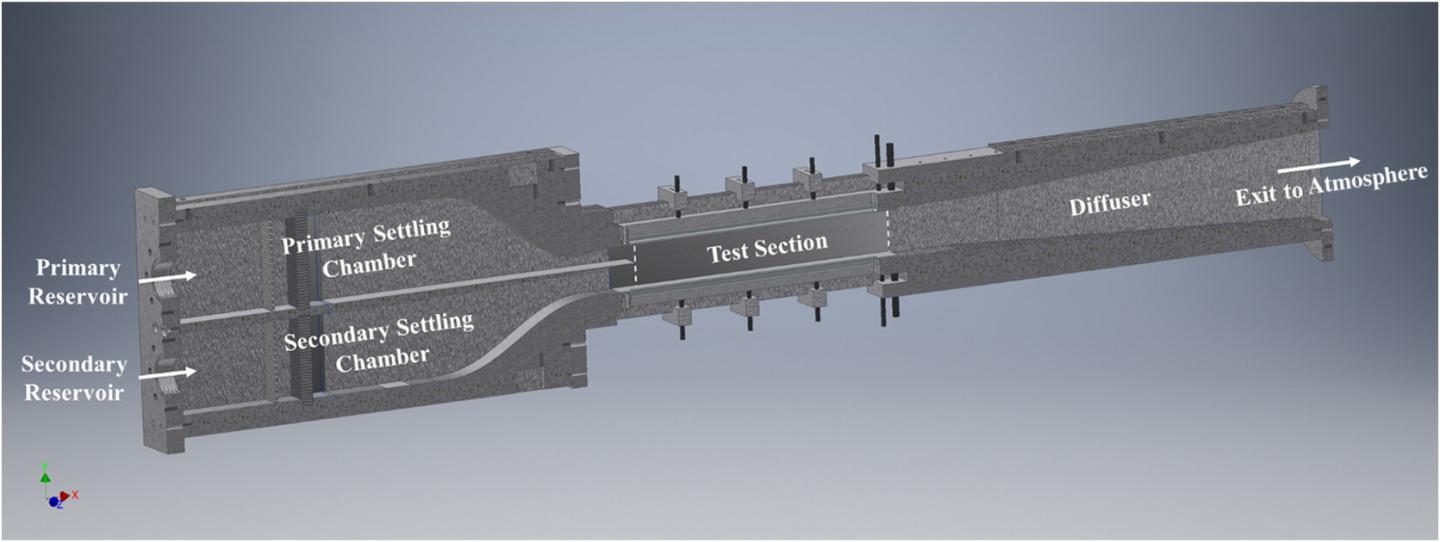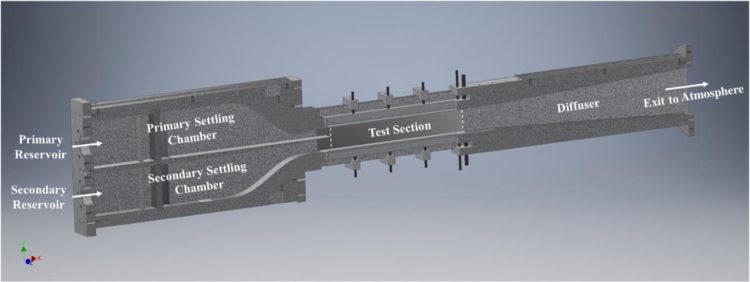
Credit: University of Illinois Department of Aerospace Engineering
Many of today’s scientific processes are simulated using computer-driven mathematical models. But for a model to accurately predict how air flow behaves at high speeds, for example, scientists need supplemental real life data. Providing validation data, using up-to-date methods, was a key motivating factor for a recent experimental study conducted by researchers at the University of Illinois at Urbana-Champaign.
“We created a physical experiment that could measure the flow field that others try to simulate with computational models to predict turbulence. It validates their models and gives them additional data to compare their results against, particularly in terms of velocity,” said Kevin Kim, a doctoral student in the Department of Aerospace Engineering.
Kim said the wind tunnel that was built and the design of the experiments were based on simple geometry and fundamental physics that allowed them to manipulate two streams of air flow, one from an air tank and the other from ambient room air. There is a physical barrier between the two streams before they reach the test section of the wind tunnel, where they begin to mix. Images are taken of seed particles in the flow.
“There are two nozzles that come after the air tank. We changed the geometry of one of the nozzles to change the overall Mach number, then studied the different mixing layers where the two flows meet,” Kim said. “Depending on the different speeds of the two streams coming in, you start to see different characteristics of the mixing.”
The primary free stream speed started at subsonic Mach 0.5, and increased to 2.5 in 0.5 increments. The secondary free stream was all subsonic, below Mach 1.
Kim said that in most previous experiments of this flow field, velocity has generally only been measured in two directions: in the direction of the freestream and perpendicular to it. What made this experiment unique is that velocity measurements were also taken in the span-wise direction for all of the different Mach numbers.
“Low speed, incompressible cases, are largely characterized by two-dimensional mixing, so you can get a lot of important information from just looking at the X and Y components,” Kim said. “Because we increased the Mach number, the compressibility goes up in the shear layer. Consequently, we see wider-scale mixing in the span-wise direction that we didn’t see when it was incompressible. A key target of the work was to make sure we got that third component of velocity in order to understand how it relates to the overall turbulence with changing compressibility. And also to capture the incoming flow conditions, the boundary layers.”
According to Kim, only two other mixing layer experiments have been performed that obtained all three components of velocity. “Our results match up with theirs, which validates our own experiments, but we took it further by measuring the flow for a wide range of Mach numbers.”
He said one direct real-world application for this work is for improving scramjet combustion, in which supersonic air comes in through the combustor and mixes with fuel.
“Scientifically, the main application is the fact that we have these results for a very fundamental flow field that simulators now can use to validate their models. In addition, all of our data are available to the public through a University of Illinois Wiki page,” Kim said. “I hope that a lot of people use this information in their modeling and that it can ultimately help improve the accuracy and advance the methods in high-speed flow simulations.”
###
The study, “Three-Dimensional Experimental Study of Compressibility Effects on Turbulent Free Shear Layers,” written by Kevin U. Kim, Gregory S. Elliott, and J. Craig Dutton is published in the AIAA Journal.
Media Contact
Gregory S. Elliott
[email protected]
217-265-9211
Original Source
https:/
Related Journal Article
http://dx.





